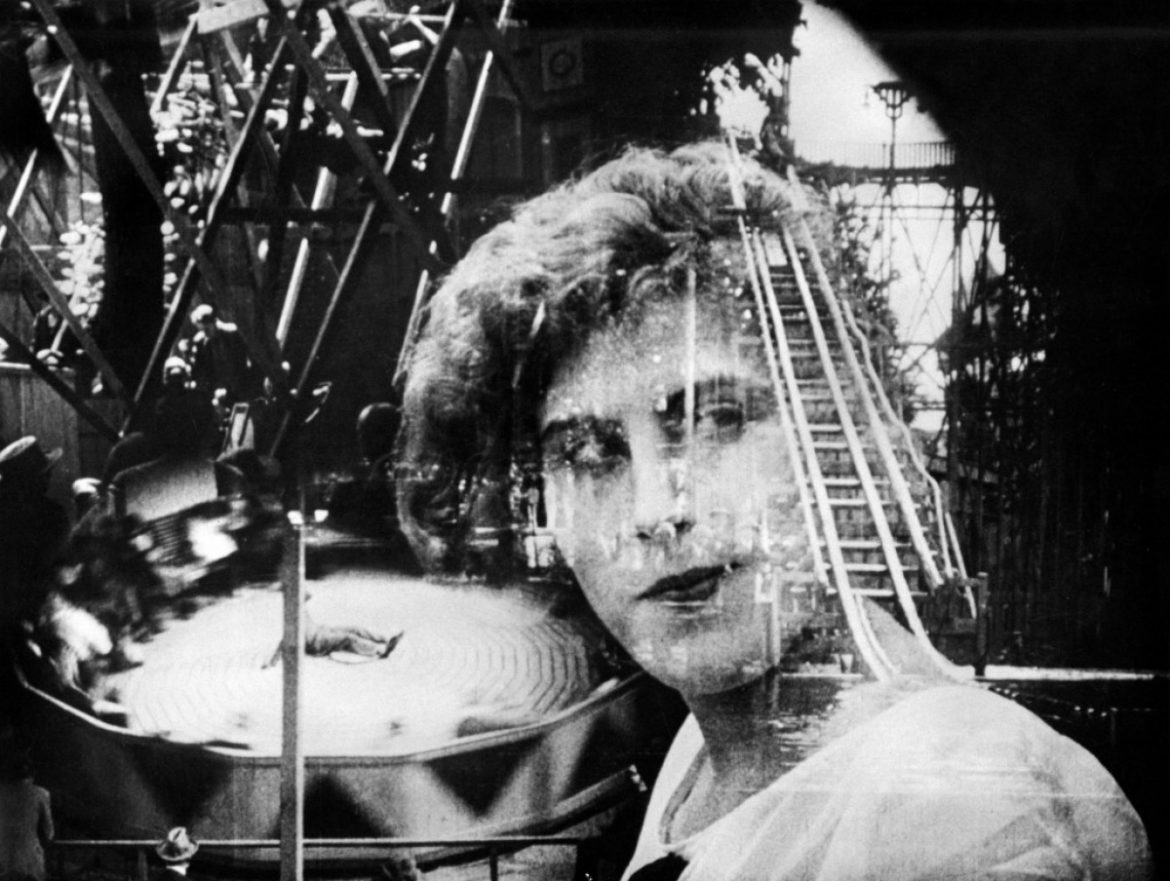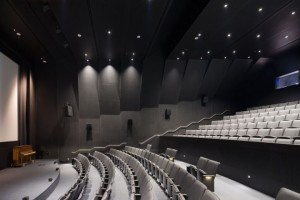In Part 2 of our discussion with Susan Oxtoby, Senior Film Curator at the Berkeley Art Museum and Pacific Film Archive, we talk a bit about film preservation and restoration, about archives and collective memory, and the future of film in the digital age.
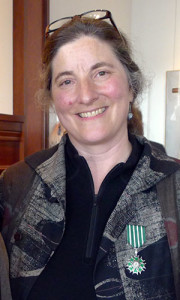 Oxtoby also went out of her way to encourage folks to come out to the Nuri Bilge Ceylan series, emphasizing “his use of the natural landscape in Turkey combined with his aesthetic,” and Bam/PFA’s three-day event with Charles Ferguson. I will be following this advice and hope to see you there.
Oxtoby also went out of her way to encourage folks to come out to the Nuri Bilge Ceylan series, emphasizing “his use of the natural landscape in Turkey combined with his aesthetic,” and Bam/PFA’s three-day event with Charles Ferguson. I will be following this advice and hope to see you there.
(This interview has been lightly edited for clarity. Part 1 is here.)
______
Rick Kelley: Can we talk about preservation for a second? What are the general difficulties and concerns today to preserving film and film ephemera?
Susan Oxtoby: The challenges are always time, money, and changing formats. The good news is that a lot of very important work is already being cared for by the world’s film archives. It’s so exciting to be in the digital era, because a lot can be done using digital techniques to help restore aspects of film. There are all the ethics around that, as well …
RK: Yeah, I got some questions about that, too. [laughter]
SO: Yeah. I’m not going to be able to go too deep on this one, but one of the challenges of just the overhead and management of digital archives or having … I mean, you’re always trying to protect the original format. So if that’s celluloid, it’s important to have it stored under proper conditions and well cared for, but then a digital interface can [be useful] in restoration. But the costs associated with the digital technology is more expensive than working in photochemical restoration.
I think, though, when you look at what’s been happening internationally, it’s really exciting, all that’s being done. [And] here in the U.S., from the film studios and the nonprofit archives to the universities to the schools that are teaching the next generation of archivists. There’s a lot that’s happening very well. And a lot of material is getting saved. If you just look over the last 15 years, even the thought that this term “orphan films” exists … there’s a sense that we need to have our collective memory preserved by archives, even when it comes to the tradition of home movies or video. This is all very exciting. We learn so much about ourselves from what’s been recorded on film.
RK: Is that how you would define archives, as a repository of collective memory?
SO: Sure, that would be a good definition. [Pause] Yes. [laughter]
Unfortunately, archivists have to be so selective in terms of what they can give the full treatment of preservation to. In the sense that, often, you need to protect the things that are the most highly threatened – if it’s nitrate composition breakdown or it’s color fading or material that’s affected by vinegar syndrome. So in some ways you both have to save the things that are unique and maybe most greatly threatened. And then there are the aesthetic choices that one makes, protecting the legacy of important film directors or artists working in film.
Part of that is public awareness. You know, from country to country, there are different ways that funding archives works. The tradition in Europe may [include] more financial support for culture, the overhead of what it takes to do archiving. There’s some countries in the first world that are lagging behind in this area.
RK: You also hear horror stories of vast swaths of collections just being lost, just being gone.
SO: And that could be because of war, bombing, and things that get lost for that reason. Or it could be climate conditions, maybe in Southeast Asia and collections that are in parts of the world affected by humidity and heat and rapidly changing temperatures really affecting how things are stored. And it’s not cheap to run an archive. I mean, the energy bills are quite extreme. So it’s a lot altogether.
The good news is that there are a lot of international partnerships and there’s been, even when it comes to filling in holes in the history of American film production, there are things that have been found in different parts of the world.
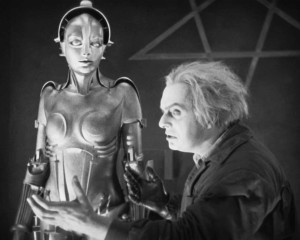 RK: Do you have a favorite discovery along those lines? Like, [lost reels of] Metropolis famously turned up years ago.
RK: Do you have a favorite discovery along those lines? Like, [lost reels of] Metropolis famously turned up years ago.
SO: I don’t know if I can name one right here and now, but it is amazing just how it’s a constantly evolving history. Things keep being found and keep being added to what we’ve already preserved.
The long and short of it is, it’s always a work in progress. You always protect your originals, because you know at some point there may be a better technology developed to help us with restoring works, or there could be new material found.
RK: Your comment earlier about the use of digital to help with restoration seems to imply that you’re not … you know, there’s the whole “film vs. digital” divide that happens and these sort of debates that go on. It seems like you have a more nuanced view of that.
SO: I love seeing film projected. So of course, if we can show a film, we will. And we go to great lengths and expense to import prints to include them in our public program.
Increasingly, I see digital restorations that I’m okay with, but I will still often be looking at digital restorations and saying, “Aw, this is paling from my sense of how this film should look on the screen.” There are good combinations of archivists working with particular lab technicians who are getting it right, and [who are] very, very concerned about how you can replicate a work in digital format that’s a really good rendering of its original film format. So I’m not opposed to it at all. But I certainly love the fact that our theater is set up and still the majority of what we show on screen is film, celluloid.
RK: Absolutely. [But] it seems like everyday there’s a new doomsday scenario about how theatrical exhibition is just going to go away. Just last week, Sean Parker’s Screening Room idea, which you might’ve heard about …
SO: I have not.
RK: Ok, so the idea is users pay, you know, $50 to get a special box and you can put on your own cinema at your house …
SO: I guess that sounds great, in the sense that people can learn issues about curation. [laughter] And how to DJ your own film program. Why not?
I’m just not opposed to digital. I mean, when I was in university, they were kind of between the 16 mm reduction print and early VHS. That’s when I was studying films and had to write papers. But then, when DVD came along as a way to preview at home or be able to go back and study something closely and see how a film is actually put together? I’m all for that. I think it’s very important to be able to have access to a work. It’s important to see it projected well in a theater and to have the cinema experience with other people in the audience, and hopefully it’s a very well presented experience of the film. But to be able to go back and study it? I think that’s very important personally to have access to digital copies. I would think that film criticism is better off when we have greater access to work in digital copies.
Of course, I’m not troubled over film attendance patterns, but then I’m also not actually programming in a commercial theater! I’m working in a very specialized context, so …
RK: How do you see the PFA’s role in that?
SO: It’s very important to have all options catering to the next generation of cinephiles, and to be offering general filmgoers a chance to understand what makes film an art form, to interact with filmmakers. I really feel like young … I’m sorry, “cinephiles” is a little precious. But I think it’s certainly important for, say, junior high students to be introduced to interesting cinema, well-programmed films, well-made films, and the sense of watching a film with an audience in a nice cinema. You don’t want to wait until university for that to happen, you know? These are art-going patterns that you want to instill at a young age, and you want people to get excited about the world of culture younger.
So yeah – I think it’s really important. It would be nice if people could often see films in a theatrical context, but that’s not always the case. But … I think we do well in that role and that we offer a really nice venue in the new theater.
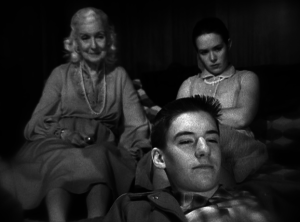 RK: Speaking of the new theater, when I saw Guy Maddin’s My Winnipeg here last month – a really hilarious, fascinating, striking movie visually – but also it sounded so good. How involved were staff with the specifications for the design of the theater itself?
RK: Speaking of the new theater, when I saw Guy Maddin’s My Winnipeg here last month – a really hilarious, fascinating, striking movie visually – but also it sounded so good. How involved were staff with the specifications for the design of the theater itself?
SO: We had quite a bit of input. Part of that input was to create a theater that had a high enough ceiling that it recedes out of your consciousness, that you’re not conscious of a ceiling that’s closing down on the projected image. I wanted it to be high enough that it receded from your mind. And to have a well-masked image, a movable masking on the top and bottom and right and left. To have a theater where the rows have a slight curve – we have so many events where we have guests, and the fact that there’s a Q&A discussion and the audience can see the person who might be speaking at the end of the row. I think that curve was very important, and [it was] was something that we requested.
And we lucked out, because Meyer Sound very generously donated. They fed into the acoustical design of the room with the architects and AV consultants who were designing the room, but they also of course produced the speakers and worked very hard to make the acoustics in that space just ideal for cinema.
RK: It really shows.
SO: Yeah. So this is great: we can play the volume on these films at just the right level and you hear all the elements of the soundtrack.
I’m very happy with the sight-lines – we actually asked for a combination of a gentle rake down at the front of the theater and amphitheater towards the back. We had a theater in mind that we were modeling the rake after. So we fed into this quite a bit.
The darkness of the room is something we all were suggesting would be very important. [And] the stage – that was another request, that we have a short stage. I previously had worked at the Art Gallery of Ontario – the Cinemateque Ontario was based at the Art Gallery of Ontario when I was there. Some of the features of this room remind me very much of [that] theater. I do like the fact that the person at the podium is looking into the room almost at eye-level. That’s good. And I think the lighting in the theater is a big improvement for us, because we can do a lot with it, and at the same time, it’s so nice to have an inviting space for discussions.
RK: Yeah, again, Guy Maddin was my recent experience and it did feel really approachable. It didn’t feel like I was at a lecture so much as a communal screening.
SO: Good!
RK: So to wrap up, what in the rest of the season are you most excited about?
SO: All of them! All of them. [laughter] Oh, let’s see. I’m not going to dodge the question.
One of the things I do love is when you see a lot of programs, you see the throughlines between different series, the way that they work off each other. That’s one way it’s lovely. But I’ve really been enjoying the Jean Epstein series. The thing is, Epstein’s work, I’d only seen a few of these programs after all these years. Many of these works are recently restored, and [with] Epstein as a filmmaker and as someone who began in the silent era, the films are beautifully composed and the editing is very fluid, so it’s an eye-opener for me to get to know his body of work.
RK: So after all these programs and different locations, there are still things for you to encounter …
SO: Oh, absolutely. It’s always like that. And I’ll never even see all the films I’d love to see in my life.

